Folds, Faults and Fracture Systems
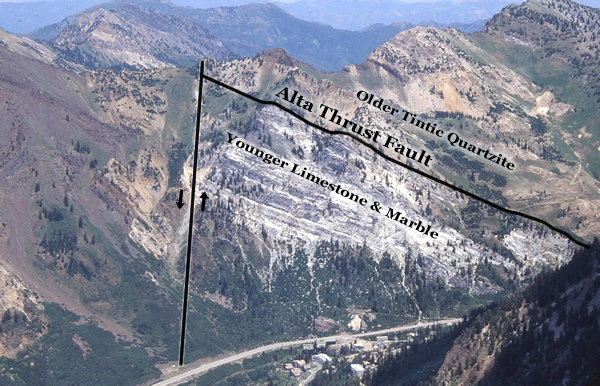
Compression also caused low-angle thrust faults emplacing older rocks on top of younger ones. The largest of these thrust faults, the Alta Thrust, runs up the east side of Collins Gulch and has shoved the Tintic Quartzite atop much younger limestones. Much of the complex structural geologic history of Alta is visible in the Hellgate […]
Folds, Faults and Fracture Systems
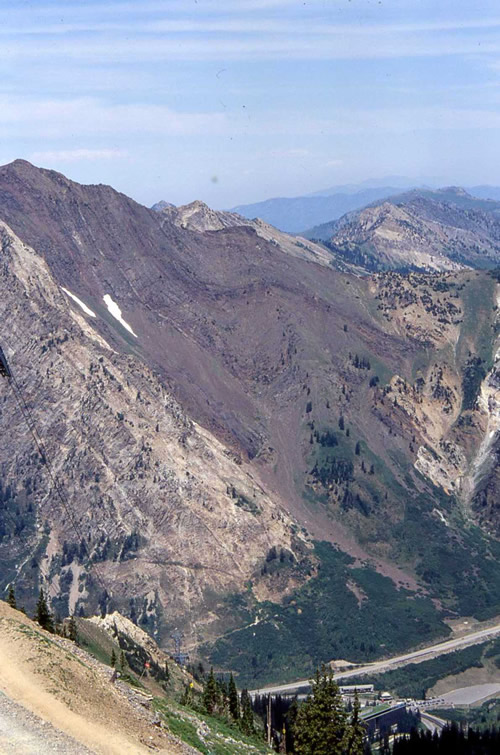
The Paleozoic sediments at Alta were folded, faulted and fractured during at least four periods of mountain building. These are referred to as the Antler, Sevier, Laramide and Wasatch orogenies (mountain building events). The three earlier mountain building events resulted in compression and folding of the rocks, folding that is well preserved in the Little […]
Glacial Features in Little Cottonwood Canyon
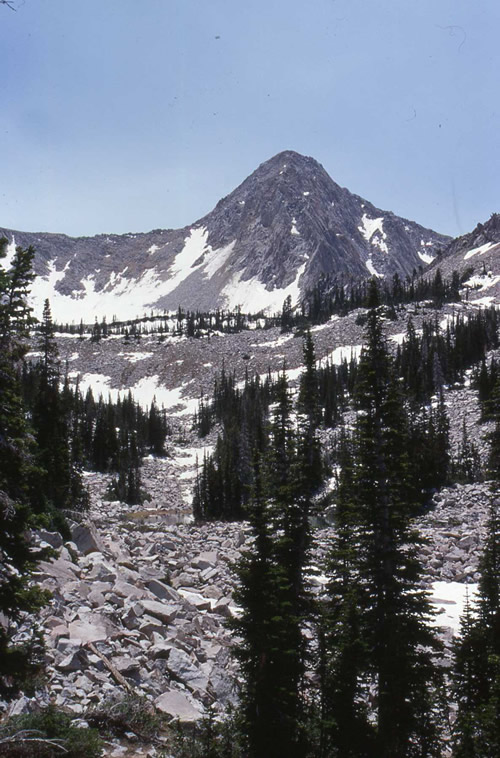
There is no Matterhorn at Alta. The Pfeifferhorn, a smaller version of its famous cousin was formed at the head of Maybird Canyon five miles west of Alta. Glaciers had begun carving away at the sides of Sugarloaf Peak, forming a pyramid shape but had not eroded it to a point. The prominent surface features […]
Glacial Features in Little Cottonwood Canyon

The mouth of Little Cottonwood Canyon is littered with enormous boulders of granodiorite and granite sitting on metamorphic bedrock that is over a billion years old. These boulders, called glacial erratics, were transported down the canyon by the ice and left behind when it melted. The lateral moraine on the north side of the mouth […]
Glacial Features in Little Cottonwood Canyon
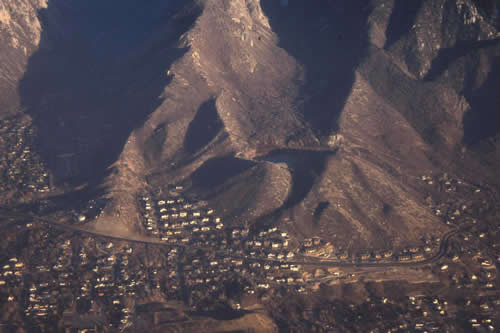
The Little Cottonwood Glacier lateral moraine is well preserved on the south edge of the mouth of Little Cottonwood Canyon. The terminal moraine was eroded away by waves from Lake Bonneville, a huge fresh water lake that filled the Salt Lake Valley after the ice melted. The Great Salt Lake is an evaporite, a small salty […]
Glacial Features in Little Cottonwood Canyon
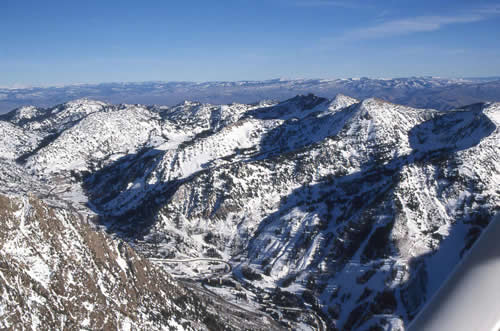
Smaller glaciers spilled into the trunk glacier from the south. Peruvian Gulch and Gad Valley glaciers entered from canyons at Snowbird. White Pine, Red Pine, Maybird and Hogum Canyons’ glaciers entered farther below. The four principle valleys of Alta and Snowbird. From left to right they are: Albion Basin, Collins Gulch, Peruvian Gulch and a […]
Glacial Features in Little Cottonwood Canyon
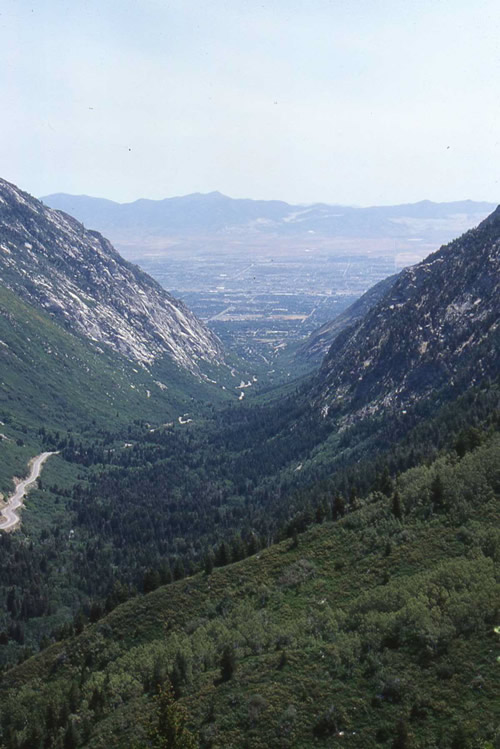
The trunk glacier roared down Little Cottonwood Canyon, carving out the enormous U-shaped valley, removing 300-400 feet of rock along the sides of the old valley. The spectacular U-shaped glacial valley of Little Cottonwood Canyon
Glacial Features in Little Cottonwood Canyon
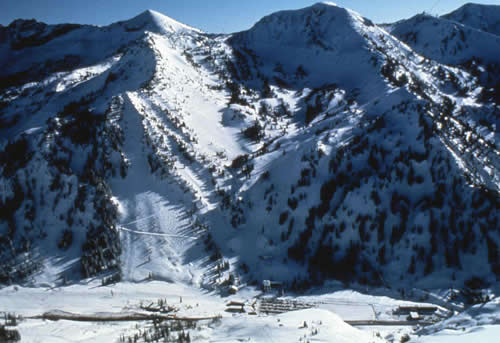
A second cirque formed in Ballroom at the base of Mount Baldy. A near vertical headwall formed on the north face of Mount Baldy. A tributary glacier carved its way down Collins Gulch, spilling into the trunk glacier in Little Cottonwood Canyon in a dramatic ice fall. A hanging valley was left behind when the […]
Glacial Features in Little Cottonwood Canyon
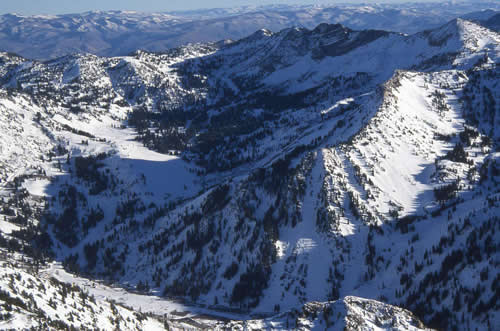
Albion Basin was carved into a broad, smooth U-shaped valley and major undulations in the valley bottom were smoothed. The trunk glacier flowed from Albion Basin into Little Cottonwood Canyon forming a broad smooth valley.
Glacial Features in Little Cottonwood Canyon
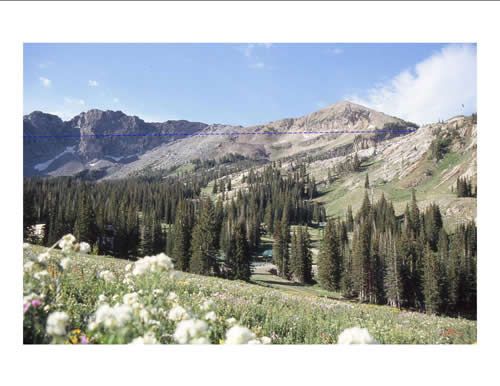
A vertical headwall was formed in Devil’s Castle and Sugarloaf Peak. Devils Castle is also a knife edge ridge (arête) formed by the Albion glacier and a glacier in the adjacent valley to the south. This was the head wall of the trunk glacier that occupied all of Albion Basin, made the turn into Little […]
